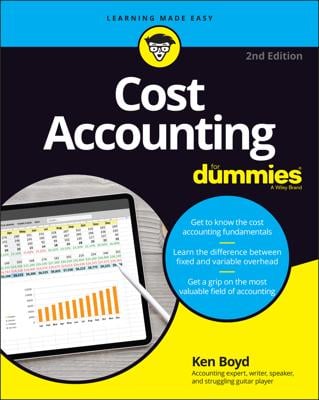Not every cost is important to every decision a manager needs to make; hence, the distinction between relevant and irrelevant costs. As a bookkeeper, you need to track the relevant costs and expose the irrelevant ones for appropriate future decision making.
Relevant costs: Costs that should be considered and included in your analysis when deciding on a future course of action. Relevant costs are future costs — costs that you would incur, or bring upon yourself, depending on which course of action you take.
For example, say that you want to increase the number of books that your business produces next year in order to increase your sales revenue, but the cost of paper has just shot up. Should you take the cost of paper into consideration? Absolutely — that cost will affect your bottom-line profit and may negate any increase in sales volume that you experience (unless you increase the sales price). The cost of paper is a relevant cost.
Irrelevant (or sunk) costs: Costs that should be disregarded when deciding on a future course of action; if brought into the analysis, these costs could cause you to make the wrong decision. An irrelevant cost is a vestige of the past — that money is gone. For this reason, irrelevant costs are also called sunk costs.
For example, suppose that your supervisor tells you to expect a slew of new hires next week. All your staff members use computers now, but you have a bunch of typewriters gathering dust in the supply room. Should you consider the cost paid for those typewriters in your decision to buy computers for all the new hires? Absolutely not — that cost should have been written off and is no match for the cost you'd pay in productivity (and morale) for new employees who are forced to use typewriters.
Generally speaking, most variable costs are relevant because they depend on which alternative is selected. Fixed costs are irrelevant assuming that the decision at hand does not involve doing anything that would change these stationary costs. However, a decision alternative being considered might involve a change in fixed costs, such as moving out of the present building used by the business, downsizing the number of employees on fixed salaries, spending less on advertising (generally a fixed cost), and so on.
Any cost, fixed or variable that would be different for a particular course of action being analyzed is relevant for that alternative.
Furthermore, keep in mind that fixed costs can provide a useful gauge of a business's capacity — how much building space it has, how many machine-hours are available for use, how many hours of labor can be worked, and so on. Managers have to figure out the best way to utilize these capacities.
For example, suppose your retail business pays an annual building rent of $200,000, which is a fixed cost (unless the rental contract with the landlord also has a rent escalation clause based on your sales revenue). The rent, which gives the business the legal right to occupy the building, provides 15,000 square feet of retail and storage space. You should figure out which sales mix of products will generate the highest total margin — equal to total sales revenue less total variable costs of making the sales, including the costs of the goods sold and all variable costs driven by sales revenue and sales volume.

